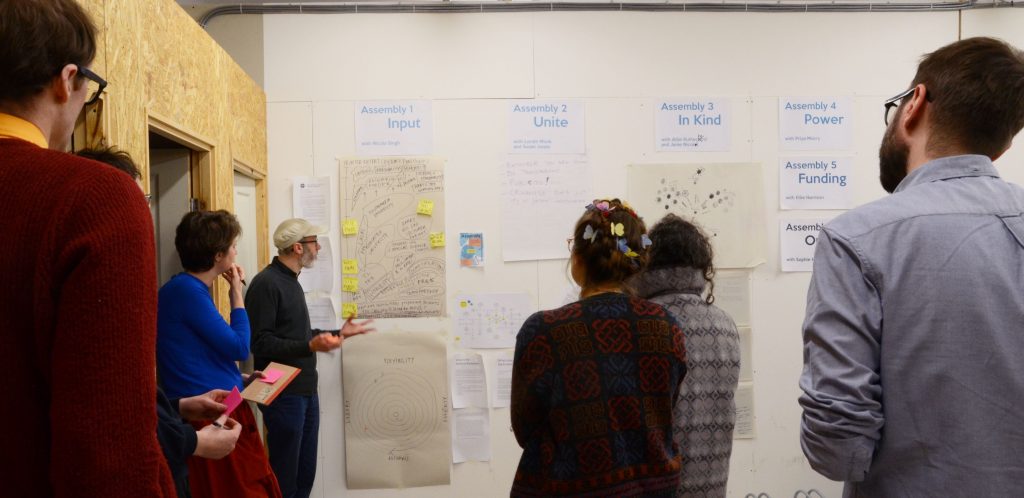In September of last year, the Invisible Worker undertook a month-long residency across two different gallery spaces in Bristol. It was residency shaped by the pandemic in numerous ways and the parameters and limitations created by the government restrictions shaped the project in interesting and unforeseen ways. It was a month I will never forget, a month of discussion surrounding precarious work and peoples’ own stories, a month of late nights and early mornings, of trial and error, paint and glue.
The Invisible Worker is a project that aims to explore the interface between work and technology in contemporary capitalism. It looks at the various ways in which technology is changing the lives of people in numerous forms of precarious work, aiming to expand our knowledge and understanding of the impacts of technology, but platforming the voices of those most affected. Principally the project takes the form of a print zine, but we wanted to expand the mediums in which we engaged to reach new audiences and challenge ourselves.
As the pandemic erupted around us and we entered into a new world that was unknown, scary and, for most of us, totally unforeseen, it became immediately clear that who and how people were affected would be based on existing vulnerabilities. As such, those in already precarious work, those on the fringes, in work that was stigmatized or insecure, and those who were already just about managing would be those who would be most affected as our economy was put to sleep and our society went into lockdown. At this point our small team of 4, began a storytelling project. We began putting the word out, asking people to write about their experiences during this period and paying them for this.
We heard from Sex Workers, Builders, Writers, Couriers, Cleaners and more and their writing forms our third issue ‘Tales From a Crisis’.
But with the backing of not equal, we wanted to do more than just create a print and online publication. The stories that we collected were beautiful, they were real and they mattered. We wanted people to read them, and we wanted the people who wrote them to know that their experiences were important and that their voices needed to be heard.
I’ve always felt that there’s immense power in taking words and pasting them on the walls, repurposing the cityscape and using it as a canvas onto which messages, ideas, ramblings, can be shared. Typically we keep this power for the highest bidder, leaving us with cities awash with car adverts, but what if we harnessed this power to put the words of everyday people? What if we took these stories and pasted them where everyone could see them, turning the street into a space of encounter? Thus was born the idea of and outdoor exhibition. Luckily the amazing, People’s Republic of Stokes Croft allowed us to use their outdoor gallery space and we took five of the pieces from issue 3 and displayed them for the entirety of September. The space is directly on the street, passed by hundreds of people every day.
The exhibition took many days to put up undertaken principally by me and Diego Jenowein alongside many helpful volunteers. Over those days I had many wonderful discussions with people, interested by what we were doing. People came up and asked questions and in return they offered their own experiences, talking about how the stories resonated with them, where they saw parallels and where their own stories diverged. It was a powerful experience, speaking to people about the multifaceted ways in which the pandemic effected their own financial stability.
The second part of the residency took place in a very different setting, located in the City Hall. This part was an indoor space, in which we displayed a range of work from issues 1-3 of the Invisible Worker. It was a chance to look at the material we had created over the last 4 years, brought into new focus by the changing socio-economic conditions of 2020.
It felt poignant to bring the stories from these issues to city hall, with many of the stories on the walls being directly implicated with the way in which policy, governance and work interact.
The aim of the exhibitions was to spark discussion and introspection as to the way in which vulnerability to crisis manifests in society. It was about exploring the nature of technology and how this is being used in ways which shapes the lives of people in precarious work. This is a discussion that continues and we hope to continue to be a part of it.



